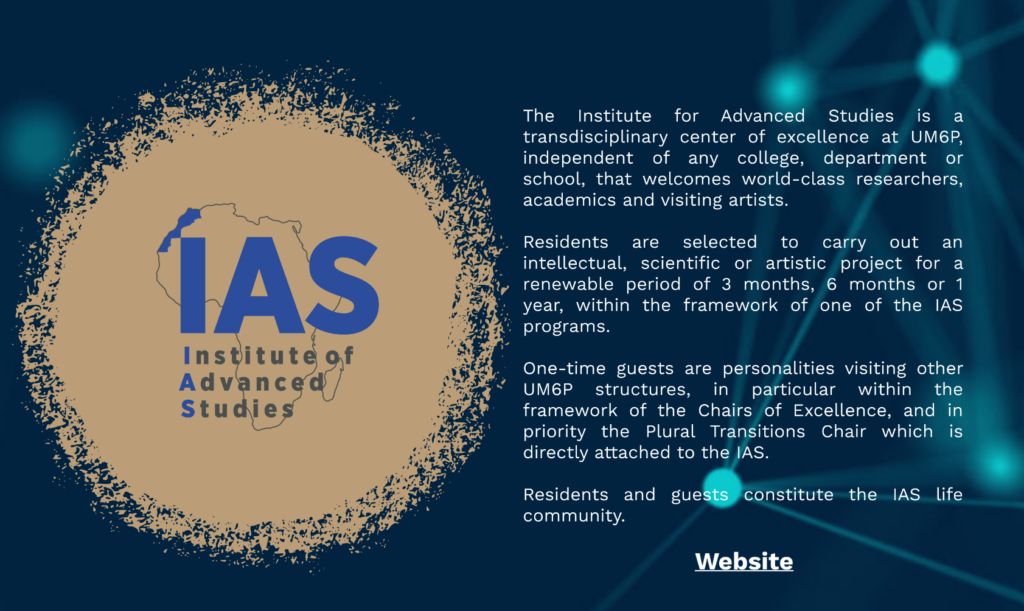Exploring the complexity of UM6P
The work undertaken here aims to better understand the extent of UM6P’s ecosystem. This in-depth investigation highlights the principle that the whole is greater than the sum of its parts. However, this thorough exploration fails to fully capture the complexity, including the formal and informal dynamics, conscious and unconscious interactions, and the cycles and processes over time.
As a university institution, UM6P exemplifies the complexity of organizations. At first glance, one can easily grasp its main divisions and facilities. As one digs deeper, it becomes apparent that the ecosystem consists of a variety of structures and dynamics that multiply, diversify, and distinguish themselves.

UM6P as an ecosystem: biodiversity, symbiosis, and ecological services
The university is indeed an ecosystem, complete with its own biodiversity, environment, and interactions. These include cooperation, symbiosis, and sometimes competition among various stakeholders, as well as energy flows represented by the individuals who work, study, and conduct research within it. The institution also exhibits ecological cycles and successions, as well as stability and resilience. Finally, it provides many “ecological” services, such as education, research, knowledge dissemination, and academic influence, thereby contributing to the larger Moroccan, African, and global ecosystems.
Beyond the formal or structural complexity of the ecosystem, UM6P exhibits characteristics that can be illustrated by concepts from the field of complexity science. A more in-depth study of these phenomena would enable the development of an even more nuanced understanding of the institution.
Unraveling the complexity of a major university institution
It is well known that non-linearity, or changes that are not proportional to their causes, manifests in various ways in a system.
At UM6P, for instance:
- The success of a student or researcher doesn’t necessarily follow a predictable linear trajectory. Combining talents, opportunities, and random factors can lead to exceptional outcomes.
- The impact of research or innovation can also be non-linear. A scientific discovery or invention can have unexpected and profound repercussions, potentially influencing various industrial sectors and society.
In a similar way, the phenomenon of emergence can manifest itself when new properties or behaviors arise from interactions among simpler components.
For example:
- Interdisciplinary collaborations can emerge between different schools and faculties within the university, giving rise to innovative research and teaching initiatives.
- Social and intellectual movements can emerge within the university community, such as initiatives focused on sustainability or changes in pedagogy.
A complex system like UM6P also exhibits self-organization phenomena, where the parts of the system interact without a central authority controlling them.
For example:
- Student clubs and student-led initiatives that spontaneously form in response to shared interests and concerns, thereby contributing to the cultural and social life of the university.
- Informal collaborations between teachers and researchers develop, based on their intellectual affinities, thereby promoting the development of innovative research projects.
UM6P also demonstrates considerable adaptability in response to the changing needs of Moroccan society and industry.
This includes:
- Introducing new academic and training programs in response to demands from the job market, especially in emerging fields.
- Establishing research centers to address emerging challenges, such as pandemic research or cutting-edge technologies (e.g., the AI Movement Artificial Intelligence Center).
Finally, as in any complex system, UM6P can exhibit complex feedback loops where the actions and reactions of different parts of the system can have unexpected effects due to the hidden intricacies of interactions.
For example:
- Introducing a new pedagogical approach or research program can trigger unexpected reactions from students, teachers, and external partners.
- UM6P’s initiatives aimed at promoting innovation and entrepreneurship can lead to unexpected changes in Morocco’s entrepreneurial ecosystem.
An institution like UM6P serves as a tangible example of a complex system within the realm of higher education and research. To understand how these academic institutions function and evolve, it is imperative to comprehend concepts derived from complexity science.
Nicolas Sperry-Guillou, Chair of Complexities ∞ Humanities





